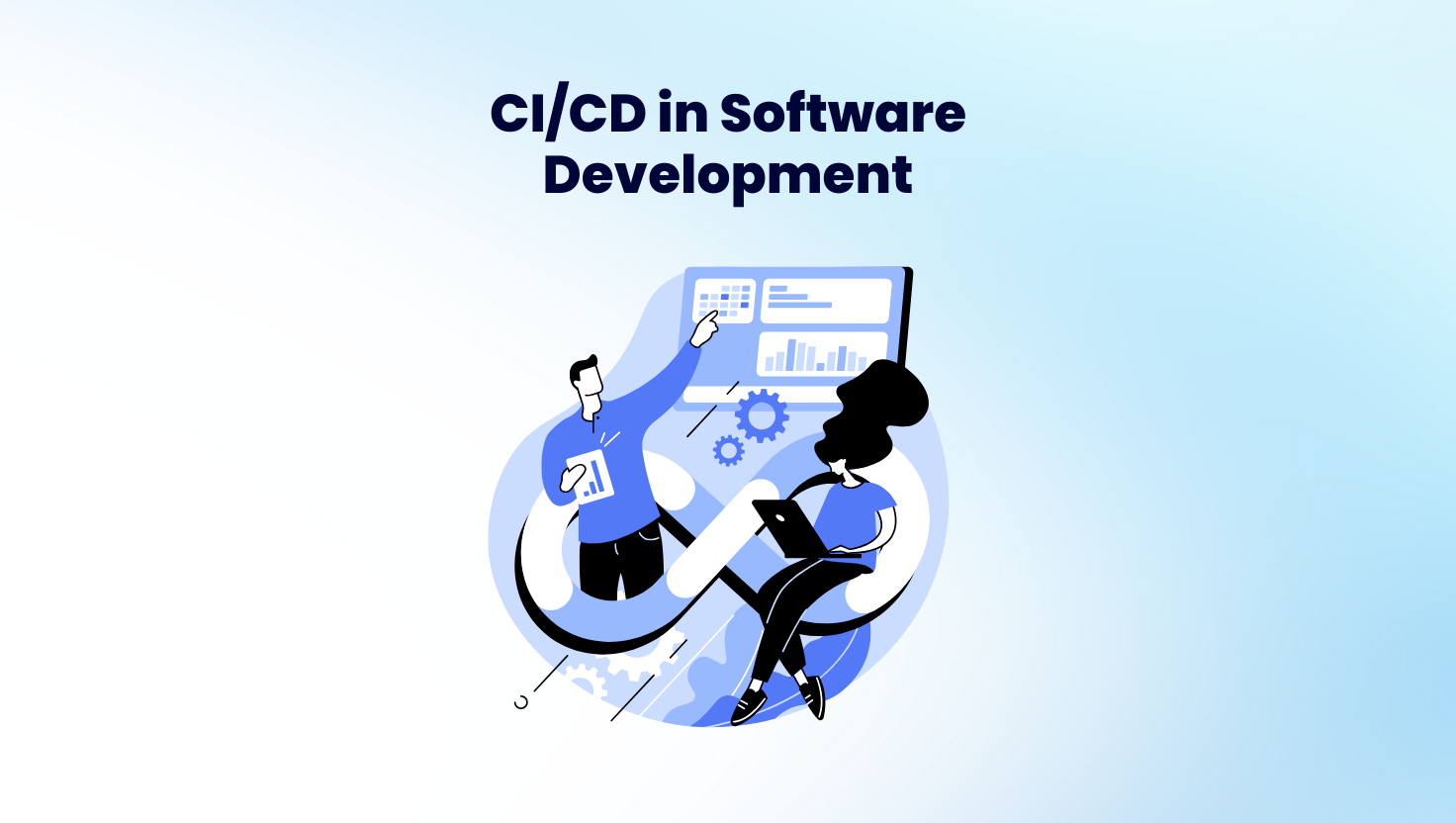
15 Mar Role of CI/CD in Modern Software Development
Continuous Integration (CI) and Continuous Deployment (CD) have revolutionized the way software is developed, tested, and deployed. These practices allow developers to automate workflows, improve code quality, and deliver applications faster. In modern software development, CI/CD plays a critical role in enabling agility, reducing manual errors, and ensuring seamless collaboration across development, testing, and operations teams.
This article explores what CI/CD is, its key benefits, best practices, implementation steps, and how businesses can leverage it for long-term success.
Understanding CI/CD: What It Is and Why It Matters
What is Continuous Integration (CI)?
Continuous Integration (CI) is a development approach where developers frequently integrate their code into a shared repository. Each integration is automatically tested to identify and resolve potential issues early in the development process.
What is Continuous Deployment (CD)?
Continuous Deployment (CD) builds upon CI by automating the release of tested code into production environments. This eliminates manual deployment steps, enabling software updates to be released quickly and efficiently.
Why CI/CD Matters in Software Development
- Minimizes Errors – Early detection and automated testing prevent deployment issues.
- Speeds Up Releases – Automating integration and deployment ensures faster feature rollouts.
- Enhances Code Quality – Regular testing ensures stable and maintainable software.
- Improves Collaboration – Developers and operations teams work more effectively with automated workflows.
By adopting CI/CD, organizations can optimize their development pipeline, reduce deployment risks, and improve overall efficiency.
Key Benefits of CI/CD in Software Development
1. Faster Time-to-Market
CI/CD enables businesses to release new features and bug fixes at a much higher speed. Automated testing and deployment processes reduce bottlenecks, allowing companies to stay competitive.
2. Higher Software Quality
Continuous testing ensures that bugs are caught early in the development cycle, leading to more stable releases. Automated test suites help verify functionality, security, and performance before deployment.
3. Increased Developer Productivity
CI/CD eliminates repetitive manual tasks, allowing developers to focus on writing code instead of handling deployment processes. Automated pipelines streamline workflows, improving overall efficiency.
4. Improved Collaboration and Transparency
With a shared CI/CD pipeline, developers, testers, and operations teams can work together efficiently. Every code change is tracked, tested, and deployed in a structured manner, enhancing transparency across teams.
5. Reduced Deployment Risks
Frequent, smaller updates reduce the likelihood of major deployment failures. If an issue arises, rollbacks are easier to implement, minimizing downtime and disruptions.
Best Practices for CI/CD Implementation
To maximize the benefits of CI/CD, businesses should follow these best practices:
1. Automate Testing and Deployment
- Implement automated unit, integration, and functional tests to catch errors early.
- Use infrastructure-as-code (IaC) tools like Terraform or Ansible for automated deployment.
- Automate rollbacks to ensure quick recovery from failed releases.
2. Use Version Control and Branching Strategies
- Maintain a centralized version control system (e.g., Git, GitHub, GitLab, Bitbucket).
- Follow branching strategies such as Git Flow or Feature Branching for structured development.
3. Implement Continuous Monitoring
- Track performance and security metrics using tools like Prometheus, Grafana, or Datadog.
- Analyze log data with ELK Stack (Elasticsearch, Logstash, Kibana) to identify potential issues.
4. Secure the CI/CD Pipeline
- Restrict access to deployment pipelines with role-based permissions.
- Use secrets management tools like HashiCorp Vault to store API keys securely.
- Regularly audit CI/CD configurations for vulnerabilities.
5. Optimize CI/CD Pipelines for Speed
- Reduce build times by optimizing dependencies and caching results.
- Parallelize testing to run multiple test cases simultaneously.
- Use containerization with Docker and Kubernetes for efficient application deployment.
Steps to Implement CI/CD in Your Business
Step 1: Select CI/CD Tools
Businesses need the right tools to build a reliable CI/CD pipeline. Some popular CI/CD tools include:
- Jenkins – A widely used open-source automation server.
- GitHub Actions – CI/CD workflows built into GitHub repositories.
- GitLab CI/CD – An integrated DevOps platform with robust automation features.
- CircleCI & Travis CI – Cloud-based CI/CD solutions.
- AWS CodePipeline & Azure DevOps – Cloud-native CI/CD services.
Step 2: Define CI/CD Pipeline Stages
- Build Stage – Compiles the application and checks for syntax errors.
- Testing Stage – Runs unit, integration, and security tests.
- Deployment Stage – Deploys the application to staging or production environments.
- Monitoring Stage – Tracks performance, security, and system logs.
Step 3: Automate Infrastructure Deployment
- Use infrastructure-as-code (IaC) tools to automate server provisioning.
- Deploy applications using containers (Docker, Kubernetes) for scalability.
Step 4: Monitor and Optimize
- Track key metrics such as deployment frequency, failure rates, and response times.
- Collect user feedback to continuously improve software updates.
How PT. KDN Supports CI/CD Implementation
At PT. KDN, we specialize in helping businesses adopt CI/CD strategies for faster, more reliable software development. Our expertise ensures that companies can optimize their workflows, reduce errors, and accelerate product releases.
Our CI/CD Services Include:
- CI/CD Pipeline Setup – Implementing fully automated integration and deployment pipelines.
- Automated Testing – Ensuring high software quality through rigorous testing strategies.
- Cloud-Native Deployments – Leveraging AWS, Azure, and Google Cloud for efficient application hosting.
- Security Optimization – Implementing security best practices to protect pipelines and applications.
- 24/7 Monitoring & Support – Proactive system monitoring to minimize downtime and maximize performance.
By partnering with PT. KDN, businesses can seamlessly integrate CI/CD practices, enhance software delivery, and ensure long-term success.


Sorry, the comment form is closed at this time.